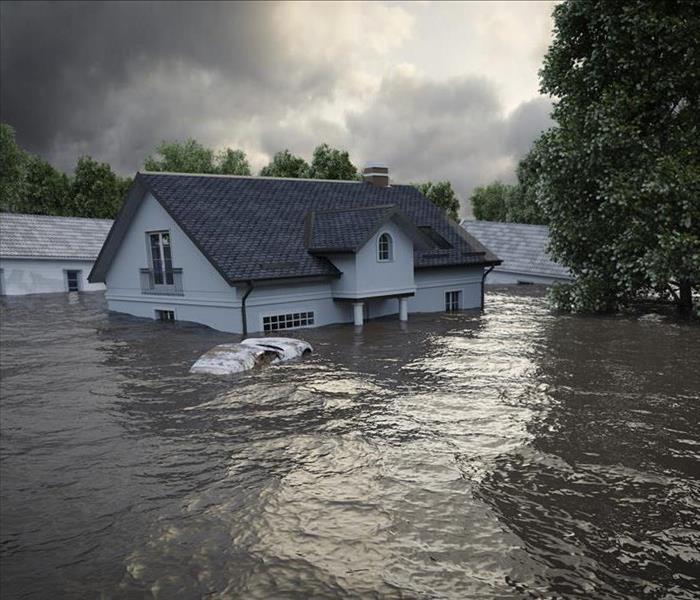Why Cleaning Flood Damage Is Different
10/28/2021 (Permalink)
There are many different types of water damage, ranging from a leaking supply line to flooding from a major storm. The process of cleaning up the water varies depending on what the cause of the water damage is.
What Makes Flood Damage Different?
The primary difference between cleaning up flood damage and other types of water damage is how the water is classified. Water is classified in one of three ways:
1. Category 1
Category 1 water is also called clean water. It is water from an uncontaminated source, such as a broken pipe or supply line. Overflow from a sink, tub, or toilet that contains no chemicals or biological contaminants may also be category 1.
2. Category 2
Category 2 water is called gray water. It is water that may contain chemicals or biological agents but is not considered grossly unsanitary. Examples include water from a washing machine, rinse water from a bath or shower, and water from a toilet that contains urine, but not feces. It can also be Category 1 water that has been standing for too long.
3. Category 3
Category 3 water is water that is grossly contaminated. Examples include sewage backups, water from flooding, and Category 2 water that has been standing too long.
Different Cleanup Methods Are Required
Different categories of water require different cleanup methods. Category 1 water generally does not have any special requirements for cleanup. Category 2 water may require the use of protective gear. Category 3 water is not safe to handle without the right training, equipment, and safety gear. Additionally, surfaces that come in contact with Category 3 water need to be both cleaned and disinfected. Because of the safety issues, it is recommended that homeowners utilize a storm damage restoration company in Black Forest, CO, to do flood cleanup, rather than attempt it themselves.
The Damage Is Usually More Extensive
In addition to the risks involved with handling contaminated water, damage from floods is usually more extensive than damage from a household situation such as a broken pipe. There may be fallen trees, downed power lines, and other obstacles. Industrial equipment, such as submersible pumps, fans, and dehumidifiers may be needed to dry out the property. Because flood events are usually widespread, it may be difficult for homeowners to find rental equipment to use.
Mold May be a Problem
Extensive flood damage also poses a mold risk. While drying out the home as soon as possible can reduce the chance of mold occurring, it may not be safe to re-enter the home until after the 24 to 72 hour period when mold may begin to grow. Homeowners attempting to do cleanup themselves may not get the home dried out fast enough to avoid mold problems. Additionally, a restoration company can address any signs of mold issues already occurring early in the process to prevent mold from spreading.
Small amounts of water from broken pipes or leaking appliances may be able to be cleaned up by homeowners. However, flooding often creates conditions that are difficult for homeowners to contend with without assistance.


 24/7 Emergency Service
24/7 Emergency Service
